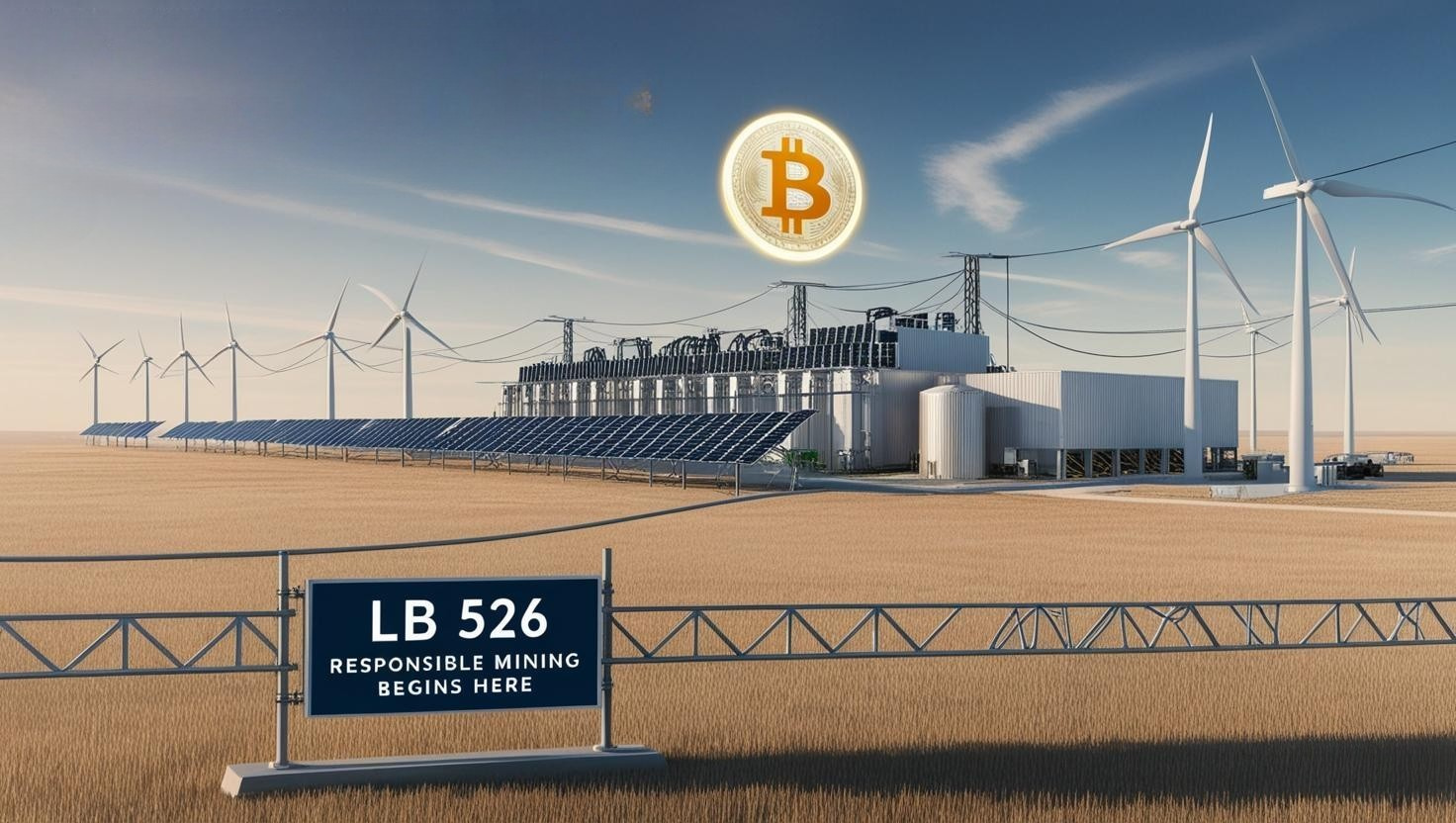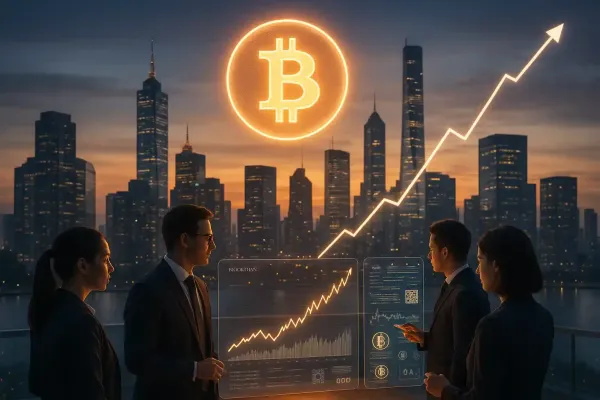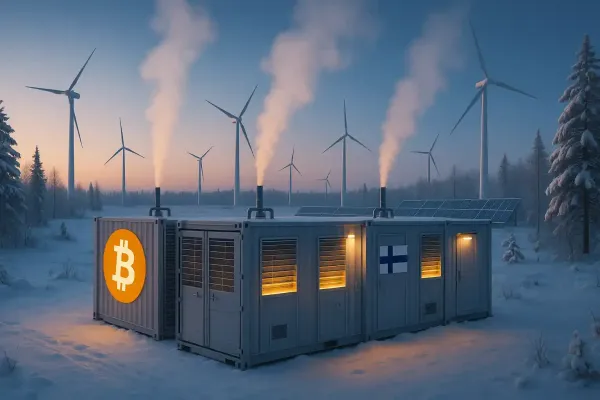Nebraska LB 526: A Landmark Law Redefining Bitcoin Mining with Energy Accountability

On May 15, 2025, Nebraska passed Legislative Bill 526 (LB 526) with a unanimous 49-0 vote—a decisive move to regulate large-scale Bitcoin mining operations that consume over 1 megawatt (MW) of power. This law aims to safeguard grid stability, enforce transparency, and ensure that miners bear the cost of infrastructure upgrades, without placing that burden on taxpayers.
While Bitcoin continues to gain global traction, LB 526 positions Nebraska as a pioneer in balancing economic opportunities from mining with long-term energy and environmental stewardship. This article outlines the core elements of LB 526, its implications for miners and investors, and its role within global regulatory trends.
Background: Bitcoin Mining and the Demand for Regulation
Bitcoin mining is the energy-intensive process of validating transactions and securing the blockchain network. Globally, Bitcoin mining consumes about 68.13 terawatt-hours (TWh) annually—comparable to the electricity usage of the Czech Republic (population: 10.7 million).
The U.S. hosts a significant portion of global hash power, with states like Texas and Wyoming leading due to cheap power and pro-crypto policies. However, this high consumption has raised concerns over grid stability, infrastructure strain, and environmental impact.
Nebraska, with its 25% renewable energy mix and relatively low electricity costs, has become an attractive destination for miners. Yet, large-scale facilities have begun stressing local grid systems, prompting action from the Nebraska Public Power District (NPPD)—leading to the creation of LB 526.
Key Provisions of LB 526
The bill introduces regulatory requirements for Bitcoin mining operations consuming more than 1 MW, equivalent to powering about 1,000 U.S. homes annually:
1. Infrastructure Cost Responsibility
- Miners must pay for grid upgrades required due to their energy demands.
- A typical 1 MW mining operation may necessitate $500,000 to $2 million in infrastructure investment depending on local conditions.
2. Mandatory Energy Use Reporting
- Operators must submit regular energy consumption reports to state agencies.
- This aligns with other U.S. states, where mining has contributed to 2–5% of total electricity use in high-density zones like Texas.
3. Potential Power Curtailment
- Mining operations may face temporary service interruptions during grid emergencies (e.g., storms, heatwaves) to prioritize residential and essential services.
4. Public Disclosure Requirements
- Public power suppliers must list crypto mining operations and their energy use on their websites, increasing transparency.
🗓 Effective Date: If signed by Governor Jim Pillen, LB 526 will go into effect on October 1, 2025.
Supporting Data and Market Context
| Metric | Value |
|---|---|
| Annual Energy Usage per 1 MW Mining Rig | 8,760 MWh (powers ~1,000 homes) |
| Nebraska’s Renewable Energy Share | 25% (primarily wind) |
| Bitcoin Mining Global Carbon Footprint (2020–21) | Equivalent to 84 billion lbs of coal |
| U.S. Public Mining Company Revenue (2024) | $1.2 billion (e.g., Marathon Digital, Riot Platforms) |
| Current Bitcoin Price (May 19, 2025) | $95,432, down from peak of $102,000 |
| Largest Bitcoin Miner in Nebraska | Marathon Digital (Q3 2024 revenue: $145M) |
Industry Implications: Opportunities and Risks
1. Higher Operational Costs
Large mining farms consuming 10 MW may need to invest $5–20 million upfront just for infrastructure upgrades. Small miners, already impacted by the 2024 halving (3.125 BTC/block), may struggle to compete.
2. Shift Toward Energy Efficiency
Miners are expected to adopt advanced hardware like Antminer S21+ (15 J/TH) and seek cleaner energy sources to meet reporting requirements and reduce costs.
3. Risk of Relocation
Stricter rules could prompt miners to move to Wyoming or Montana, which offer similarly low energy rates (6–8 cents/kWh) but looser regulation.
4. Mixed Market Reactions
Investor sentiment is divided. Some see LB 526 as legitimizing mining and boosting public trust in firms like Marathon Digital. Others fear it may erode profitability and innovation.
Global Regulatory Landscape
Nebraska’s LB 526 reflects growing global efforts to rein in the environmental toll of crypto mining:
- Malaysia (2021): 7,209 illegal mining cases caused $550M in stolen electricity.
- China (2021): Mining ban slashed global hash rate by 50% before miners relocated to North America and Kazakhstan.
- UN Report (2023): Bitcoin mining’s water usage (2020–21) reached 1.65 km³—equivalent to 660,000 Olympic pools.
Meanwhile, at the federal level, initiatives like the Bitcoin Act of 2025 aim to establish a national Bitcoin reserve, while figures like Donald Trump advocate for making the U.S. a crypto leader. This creates a unique regulatory paradox between state-level controls and national ambitions.
Case Spotlight: Marathon Digital Holdings
As Nebraska’s largest miner, Marathon’s reaction to LB 526 will be pivotal. With sites like Kearney, the company may have the financial and logistical ability to comply with the new law, whereas smaller competitors may be forced out or consolidated—echoing the May 13, 2025 merger between American Bitcoin and Gryphon Digital Mining.
Conclusion: A Blueprint for Responsible Mining?
LB 526 is a bold attempt to align Bitcoin mining with public interest by enforcing infrastructure responsibility and energy transparency. While it introduces compliance costs and operational uncertainties, it also pushes the industry toward renewable energy adoption, efficiency, and sustainability.
If implemented with flexibility and supported by incentives (e.g., renewable energy tax credits), LB 526 could help Nebraska become a model for eco-conscious crypto regulation. As the price of Bitcoin fluctuates—with forecasts projecting it could reach $160,000 by end-2025—mining operations that can balance cost, compliance, and carbon impact will likely emerge stronger.
Sources
- Nebraska Legislature Bill Text, LB 526 (2025)
- CoinMarketCap, CoinShares, UN Report (2023)
- CoinGecko Bitcoin Price Data (2024–2025)
- Social media sentiment (X, May 2025)
- Public statements by Marathon Digital and NPPD
This article presented by Loka Mining.
Loka is revolutionizing the Bitcoin mining ecosystem by directly connecting investors with Bitcoin miners through a decentralized mining pool and an upcoming permissionless forward hashrate marketplace protocol.
Loka enables investors to get Bitcoin at lower than market price without centralized & counter-party risks, and Bitcoin miners to access capital efficient financing and hedge their risk exposure by selling their future mining rewards.
Find out more about loka in https://lokamining.com — or access our mining pool aggregator on https://pool.lokamining.com





